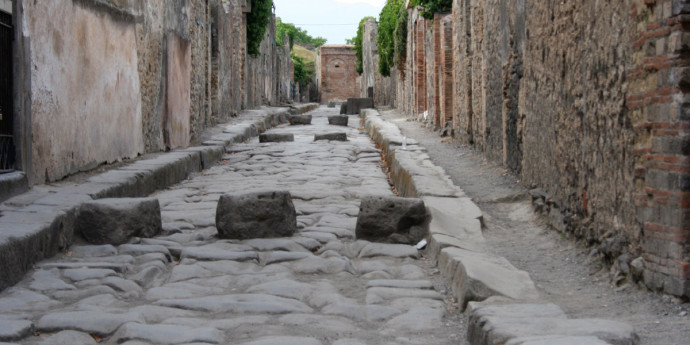The Ruins of Pompeii

Nowadays Pompeii is one of the most famous and visited archaeological sites in the world. The origin of the city is uncertain: the oldest reports date back to the 7th century B.C. In Roman times its ideal location and its magnificent scenery led many wealthy Romans to build villas there. Unfortunately the city was much damaged by an earthquake in 62 A.D and on the 24th August of 79 A.D. was completely demolished by an eruption of Mount Vesuvius together with the ancient Roman resort towns of Herculaneum and Stabiae. Even the memory of its exact location was lost over the centuries. For more than 1500 years Pompeii has been buried undisturbed beneath heaps of ashes and cinders until it was rediscovered in 1748. Among the most significant aspects of the discoveries at Pompeii is the remarkable degree of preservation of the ancient objects. The showers of wet ashes and cinders that accompanied the eruption formed a hermetic seal on the town, preserving many public structures, temples, theaters, baths, shops, and private dwellings. In addition, remnants of some of the 2000 victims (about 5,000 people lived in the city at the time of the eruption) of the disaster were found in the ruins of Pompeii, including several gladiators who had been placed in chains to prevent them from escaping or committing suicide. Ashes, mixed with rain, had settled around the bodies in moulds that remained after the bodies themselves had turned into dust. In the years 1860-75 Giuseppe Fiorelli takes charge of the excavations, developing a technique of casting bodies. Fiorelli’s masterstroke was to devise a method of injecting plaster into the spaces left vacant by the flesh as it decomposed, enabling him to recover the shapes of the bodies as they had fallen. We have also learned much about how they died during the eruption. There are numerous moulds of people in their final moments. Moreover to simplify study and orientation, Fiorelli divided the city into regiones (neighbourhoods) and insulae (blocks). Today the city with its buildings, the temples, the streets with the ruts made by chariot wheels in the paving blocks, even the walls with inscription of various type, tell astounded visitors the story of ancient Roman everyday life.
The Ruins of Pompeii are open:
From April to October
– from 8.30 am to 7.30 pm , but visitors can access the excavations till 6.00 pm
From November to March
– from 8.30 am to 5.00 pm , but visitors can access the excavations till 3.30 pm
